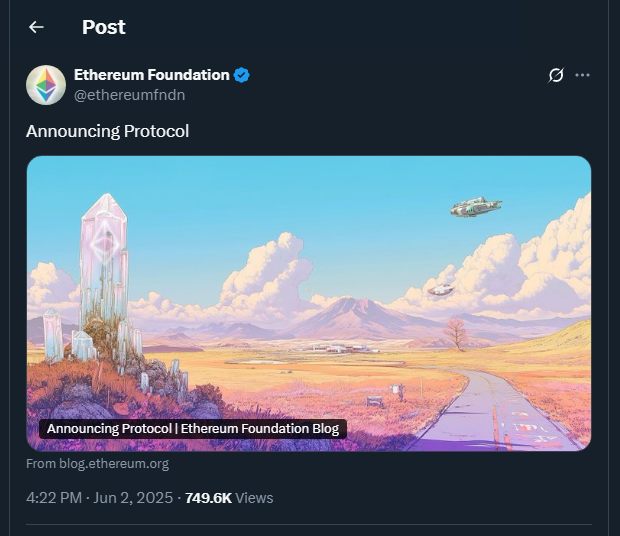TL;DR
- The Ethereum Foundation is unifying its research and development teams under a new structure called “Protocol.”
- The reorganization focuses on scaling the base layer, optimizing blobs to improve Layer 2 performance, and delivering a smoother user experience.
- With technical leads assigned to each focus area, the goal is to accelerate the transition from theory to implementation, enhancing timelines, collaboration, and development efficiency.
The Ethereum Foundation, one of the most influential organizations in the blockchain ecosystem, has announced a significant restructuring of its protocol development teams. This decision comes after months of internal reflection and advancements such as the Pectra upgrade.
The main goal now is to accelerate critical network developments while maintaining Ethereum’s relevance in a rapidly evolving environment. To achieve this, a new division called “Protocol” has been created, focusing efforts on three key areas: scaling layer 1, optimizing scalability with blobs, and improving user experience.
This strategy marks a shift in how technical efforts are distributed within the foundation and also sets a precedent that could influence how other blockchains approach their own governance and structural development processes.
New Responsibilities for Clearer Execution
This reorganization also brings new leadership into focus. Tim Beiko and Ansgar Dietrichs will lead efforts on the base layer. Alex Stokes and Francesco D’Amato will be responsible for blob optimization. Meanwhile, Barnabé Monnot and Josh Rudolf will head initiatives related to user experience. Additionally, Dankrad Feist will contribute as a strategic advisor across all three areas. This distribution is meant to bring clarity, speed, and better coordination among teams that previously worked in a more fragmented way. The new structure will also make it easier to track progress, allowing the community to better assess the impact of each phase. This is critical to maintaining trust in the ecosystem and securing support from developers, validators, and users.
The Foundation also aims to respond to the growing competitiveness of the space. Solutions like zkEVMs and Layer 2 networks are evolving rapidly, pushing Ethereum to remain agile and innovative. The new approach seeks to shorten the gap between academic research and functional code. On top of that, internal governance changes are being implemented, along with new forums for technical discussion and an active search for new talent to reinforce key areas like UX and performance.

A More Efficient Path for Ethereum’s Future
Protocol is being presented as a more unified structure, with fewer members and more clearly defined roles. The Foundation confirmed that some researchers and developers will not be continuing, but encouraged other projects in the ecosystem to bring them into their own teams. With this restructuring, Ethereum aims to move forward with more deliberate and coordinated steps toward a more scalable, faster, and more accessible network for millions of users.











